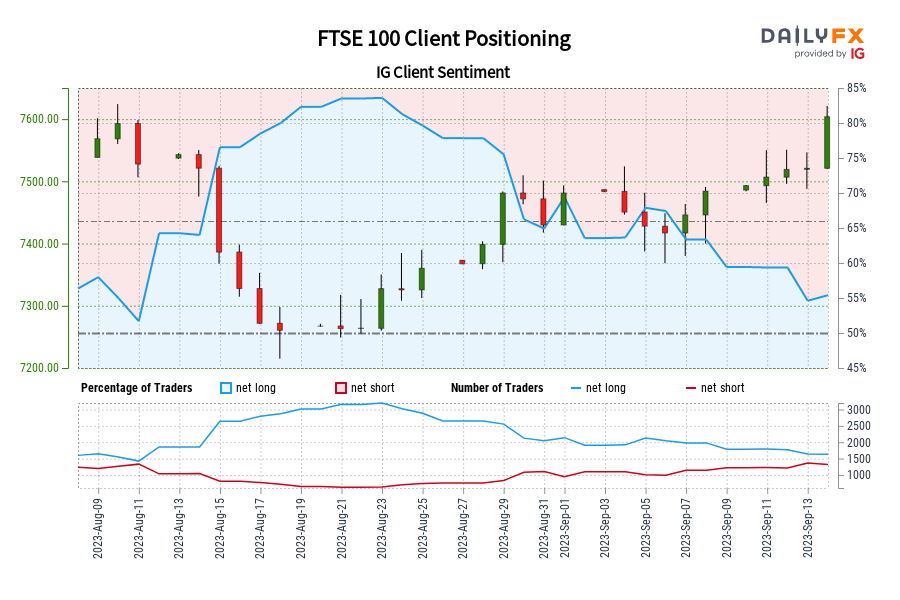Number of traders net-short has increased by 40.38% from last week.SYMBOLTRADING BIASNET-LONG%NET-SHORT%CHANGE IN LONGSCHANGE IN SHORTSCHANGE IN OIFT

Number of traders net-short has increased by 40.38% from last week.
| SYMBOL | TRADING BIAS | NET-LONG% | NET-SHORT% | CHANGE IN LONGS | CHANGE IN SHORTS | CHANGE IN OI |
|---|---|---|---|---|---|---|
| FTSE 100 | BULLISH | 46.27% | 53.73% |
-12.56% Daily -26.97% Weekly |
21.99% Daily 40.38% Weekly |
3.14% Daily -1.60% Weekly |
| Change in | Longs | Shorts | OI |
| Daily | -26% | 37% | 0% |
| Weekly | -33% | 42% | -4% |
FTSE 100: Retail trader data shows 46.27% of traders are net-long with the ratio of traders short to long at 1.16 to 1. In fact, traders have remained net-short since Aug 10 when FTSE 100 traded near 7,592.80, price has moved 0.14% higher since then. The number of traders net-long is 12.56% lower than yesterday and 26.97% lower from last week, while the number of traders net-short is 21.99% higher than yesterday and 40.38% higher from last week.
We typically take a contrarian view to crowd sentiment, and the fact traders are net-short suggests FTSE 100 prices may continue to rise.
Our data shows traders are now net-short FTSE 100 for the first time since Aug 10, 2023 when FTSE 100 traded near 7,592.80. Traders are further net-short than yesterday and last week, and the combination of current sentiment and recent changes gives us a stronger FTSE 100-bullish contrarian trading bias.
element inside the
element. This is probably not what you meant to do!Load your application’s JavaScript bundle inside the element instead.
www.dailyfx.com
